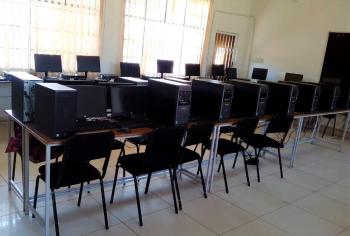The Amhara Digital Schools project has established computer labs (with 21 PCs each), across 25 schools in the Amhara region of Ethiopia. In total, the program has supplied 551 PCs and impacted more than 30,000 students from underprivileged communities in the region.
The project’s Stage 1 activities have been successfully delivered and in-depth feedback from teachers and students has helped to inform Stage 2 of the project, focusing on enriching the existing 25 digital schools through the provision of ongoing training, valuable e-learning content through our Raspberry Pi based Connect Device and a tailored package of assistive technologies (e.g. projectors, printers and speakers).
Through reviewing the interviews and feedback received from teachers and students, we have identified a need for reference materials and up-to-date educational content. In the last year, we have been developing a solution, the Connect device, to target this problem. This represents a way to combine valuable and diverse educational content in an offline platform that can be easily installed in the computer labs, to help teachers use the computers more in different subjects. This bypasses the need for internet connectivity in order to have digital resources and content.
The project will have long-term sustainability; not only benefiting teachers and students during their time at the schools but also in their futures, by providing them will highly-desirable skills that will benefit them in higher education and employment.
This project contributes to the following Sustainable Development Goals (SDGs):
| Our work contributes directly to Target 4.1 of SDG 4, by improving primary school educational outcomes for boys and girls. Additionally, students are gaining relevant technical skills that will improve their job prospects, contributing to Target 4.4. | |
| This project directly contributes to Target 5.B of SDG 5, since we select schools who have a similar ratio of girls to boys and actively promote the usage of equipment by both genders, ensuring that no individual is excluded. | |
| By providing 25 primary schools with computer labs and assistive technology such as projectors, allowing thousands of students to access information and communications technology, we are directly contributing to Target 9.C ofSDG 9. | |
| ICT Equipment used in projects is donated largely from companies; equipment is data-wiped and refurbished before being sent to projects. Therefore, this project is directly contributing to Target 12.5 from SDG 12, by reducing e-waste and allowing technology to be reused. |


